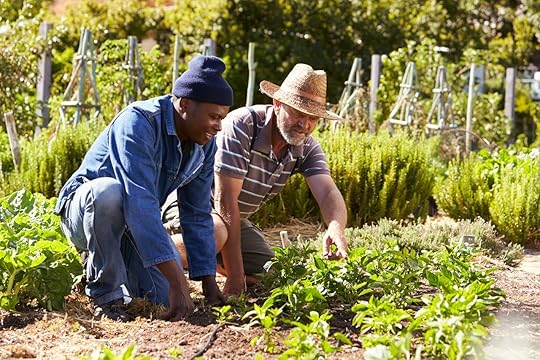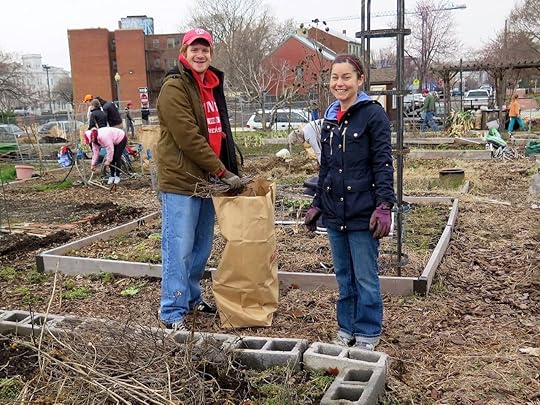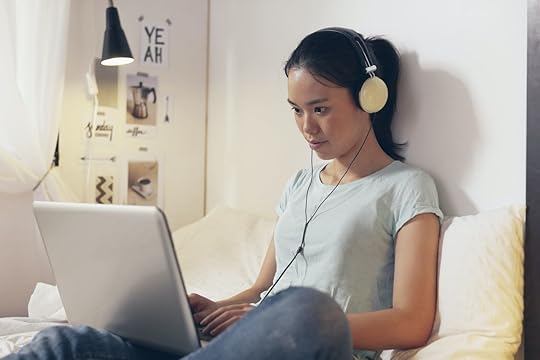Matador Network's Blog, page 898
March 23, 2020
Mental health tips amid coronavirus

There’s no shame in feeling sad or scared. In stressful times, we’re all more vulnerable to anxiousness and depressed moods, panic and erratic behavior. They’re simply survival mechanisms that have protected us for millennia. But stress plus isolation is a bad combination. These passing issues can become staying problems, taking up room for rent in our heads, making a mess, and refusing to leave.
Happily, there are several simple things we can do every day to preserve our mental wellness. Just like washing hands and social distancing are critical for physical health during a pandemic, these are the preventative strategies that keep mental health strong. And luckily for us all, we don’t even have to leave our homes.
1. Protect your thoughts
We need to flatten two curves. One is the obvious curve, the spread of COVID-19. The other is the spread of anxiety and panic. Also highly contagious, anxiety and panic lead us into more and more irrational thoughts, what we therapists call cognitive distortions. These shove us from prepared to panicked. Big players right now are fortune-telling and catastrophizing: We know for sure what’s going to happen, and it’s going to be terrible. Not a helpful thought when you’re trying to press on.
Challenging distorted and unhelpful thoughts requires both a sword and a shield. Your sword is actively challenging negative thoughts. Your shield is being picky about what content you expose yourself to and what you give time.
Ask yourself, is this thought true? Is this based on facts or on possibilities? Pretty tricky, especially when there are several factual things happening that are concerning and even scary. But the run on toilet paper is a great example. We could have a shortage of toilet paper production and distribution in the future, but the fact is there is no disruption in the manufacturing or supply chain right now, just panic buying. Human behavior created this temporary shortage because of our distortions.
Is this thought helpful? This is your clearest challenge. Even if this thought is true, does it help? Can you do anything about it? Should you do that thing? We have thousands of thoughts in a day, and not all of them need attention. Nurture the ones that are good for you, that make you strong, and that give you peace.
Limit your media time. Media is not bad. It gives us the opportunity to connect and get the information we need. But long gone are the days where news was limited to the morning paper and daily news hour. We now have access to information and opinion all the time. We can feel the panicky thoughts wake after a constant diet of breaking news, Twitter headlines, or Facebook posts. Just like you wouldn’t go into a store and touch every surface, you don’t need to expose yourself to all available content. Make a conscious effort to step back from it all.
If you need additional support or counseling during this time, you’re not alone. Our field has telehealth options worldwide that you can access from your home. Contact your region’s mental health departments for recommendations.
2. Stay social — in new and old ways
Humans are pack animals. We’re wired to connect. As babies, we learned to read cues from caretakers and regulate our most primal feelings in sync with those around us. We need each other. In our previously fast-paced world, we used to crave what we now call social distancing. But the reality of prolonged social distancing can open the door to loneliness for even the most staunch introvert.
It’s time to go old school with communication. Keep texting, posting, tweeting, sharing memes, there’s nothing wrong with that. But we all need to hear our people’s voices. Verbal communication is unique. Hearing the voices of people we care about releases special feel-good hormones; texting does not.
So pick up the phone and place a call once a day. Countless apps like Zoom, Skype, Facetime, and WhatsApp offer video and audio options to get the full benefit of both verbal and non-verbal communication. If you’re an extrovert that is craving a larger socially distanced scene, virtual connections are multiplying. This is not the time to rely on texting. The more voices and faces, the better.
3. Keep your basic routines
As important as it is mundane, keep routine in your life, especially when it comes to your daily needs. Even in this unpredictable time, there are some things we can and need to control.
A steady sleep schedule is crucial for stable mental health. It is so easy to succumb to this vacation feeling if you’re socially isolating, so easy for your sleep to creep later and later until day and night are flipped. And any veteran of depression and anxiety management can tell you that flip is a dangerous situation for a mind under pressure.
Even if your days are more flexible now, make yourself get up by a certain time. Limit naps. Get to bed at a regular time. Our bodies and brains have to reset, to restock the proverbial shelves. Give yourself what you need.
Other routines that deserve a shout out include regular meal times, getting dressed in clean clothes, and daily hygiene. No shame if you want to sit in sweats all day, just put on clean ones. Brush your teeth and hair, wash up. We take good care of things that are valuable to us. Practicing self-care is a way of saying that you are valuable, which builds armor against hopelessness and worthlessness.
4. Get moving
Even if you weren’t a gym-goer before social isolation, chances are you were doing a lot more moving around as you went out into the world. And all that activity helped build not just a healthy body but a happy brain. Even 10 minutes of physical activity a day can make a difference.
Do something daily that gets your heart rate up. It could be cleaning, climbing stairs, going for a walk in uncrowded locations if allowed, or dancing around your house. For those that like more structured workouts, many gyms, yoga studios, and workout brands are streaming classes and even offering free access during this time. Scheduling the time and setting the space at home help make this happen. (Hello routines!) Go on and get that lovely endorphin rush.
5. Sunshine and nature
Sitting inside all day is not good for anyone. Sunlight affects our complex cocktails of hormones that boost or sink our mental wellness. It releases feel-good serotonin, regulates sleep cycles, and staves off depressive mood. Taking the healing power of the outdoors one step further, studies keep backing up an intuitive truth: Nature is good for our emotions.
We need to connect with the outside world, but responsible social isolating practices bring up a lot of questions about getting outside. Some of us live in areas where you can simply walk out the door and take a stroll in deserted forests, parks, and fields. Others have a balcony, a fire escape, a window, or even just a door. For those of you in the latter category, all is not lost. There are still ways to find remote green spaces near you. And everyone can benefit from simply sitting in some sun, opening a window, or just throwing up the shades.
6. Find activities and purpose, but pace yourself
“I feel like I’m in a hurry to go somewhere, but there is nowhere to go!”
The woman overheard from my porch is not alone in this feeling. So many of us are being forced to slow down our pace of life, and it’s probably a good thing. But as we all are painfully aware, change is unpleasant.
When we’re distressed, we tend to go to extremes. There are a lot of problems to be solved right now, and some people feel satisfaction scheduling up every hour trying to address them. Others are bingeing every Netflix recommendation. Neither is all bad or all good; as with most things, your mental health blooms best in the middle.
Make time for work and a sense of purpose. If you don’t have work right now, or it doesn’t leave you with the “I did something” feeling, look for a hobby or project that will give you that sense. Last and never least, make time for play. Dust off your games, pull out the crafts, gather your loved ones, and have some laughs.
We are going to make it through this difficult time. And other difficult times, too. If nothing else, tell yourself that every day. We have an incredible capacity for creativity and innovation. Collectively and individually we are far more resilient than we realize. Look at the beautiful things going on across the globe. We may not all be singing in unity from our balconies, but there are inspiring examples everywhere of people coming together for the good of everyone. Choose your thoughts. We can do this. 

More like this: How you can help hospitality workers affected by COVID-19
The post A therapist’s guide to boosting your mental health when you’re socially isolated appeared first on Matador Network.

Homesick cures as borders are closed

When Yale University told its students to plan for possibly not returning after spring break, Laura Koech considered returning to her family in Kenya. At the time she made her decision to stay in the US, Kenya had no cases of COVID-19.
“The risk of contracting the virus in transit was too high,” said the college junior majoring in psychology. She said that in addition to the possibility of bringing the virus home to her parents and three younger siblings, she also had her grandparents to worry about.
While Koech said that she was already used to being independent, having left her native country to study in another continent three years earlier, the situation today seems distinct. “It definitely feels different. All my other Kenyan friends managed to go home,” she said.
Koech’s story is being replicated all over the world. In Luxembourg, Collicia Smith said financial reasons kept her there. The Philadelphia native studies behavioral neuroscience at the University of Albany. She opted to take all her mandatory elective classes while studying abroad, and Luxembourg was the least expensive semester-abroad option.
However, when President Trump announced the imminent border closure with Europe on March 11, Smith was left with a tough choice. “My family is super important to me… but my first concern was my education. If I could go back [home] tomorrow and make sure that I still get my credits, then I would go back in a heartbeat,” she said.
However, had Smith left 10 days ago, she would have lost all her credits, foregone the money spent on her semester-abroad program, and needed to add a year of school to her education back in the United States. She said she’s not worried about her own health and feels fortunate to have a brother stationed with the US military only an hour away in Germany — even if Luxembourg’s border with that country is now technically closed.
However, Smith is concerned for her elderly mother and father. “My parents are older, so I’m worried about them, their health. So I’m worried if anything were to happen, could I get back?” said Smith.
Border closures and canceled flights aren’t just affecting younger adults who might have been used to spending summers at their childhood home but also people who long ago moved away from their native country and are even raising families of their own abroad.
Patricia Barcinski left her native Brazil just out of college over two decades ago and now lives in Switzerland with her husband and two children. Her sister and her aging parents, however, remain in Rio de Janeiro. Barcinski recognizes that she’s been privileged to know she could afford to fly to Brazil in the event of an emergency.
And while she and her husband have agreed that Barcinski would fly home should one of her parents fall ill, the question becomes — as borders close — whether or not she would actually have that option. “You have to see if it’s even possible,” she said. “It’s surreal. It’s like we’re living in an episode of Black Mirror.”
Staying positive in a time of crisis
While none of us knows what the next month, week, or even the next day will bring, everyone with whom we spoke has found ways to cope with the uncertainty. Since many of them have already lived far from beloved family members, or from the country of their birth, they already have practices in place to take care of themselves and keep their sense of connection with loved ones strong — no matter the distance.
For her part, Koech remains remarkably positive. She said that while “20 percent” of herself is thinking she should have gone home to Kenya, she recognizes that she had already made the leap to leave home when she opted to attend college in the United States.
“Right now it’s like the world is ending, and you’re not home, and it’s okay. I’m working on looking at the positives,” said Koech. “I’m 22. It’s a test of accepting adulthood. I’m not always going to be able to go home.”
Since she already lives off campus, Koech can stay in New Haven. Two of her five housemates will be there, and they are taking in other students who had to leave their campus housing at Yale or even at other nearby colleges. Koech lives with international students, so she has a community that shares her predicament.
Koech had already made a home away from home for herself in New Haven by bringing objects from Kenya to her off-campus housing and searching out foods that are similar to, if not exactly the same as, the foods she knows from her home country. This might be harder to accomplish when nothing but grocery stores and pharmacies are open — but Amazon is still delivering and is a good source for hard-to-find ingredients.
Communicating consistently but setting boundaries

Photo: Dean Drobot/Shutterstock
Like the majority of people on the planet right now, Koech is speaking to her family more often and sending texts several times a day. And while that is critical, it may also be helpful to put some structure into your communication with family that is far away. That, at least, is the experience of Jordan Ricker. Ricker left the United States to earn his bachelor’s degree in Europe and is now working on a master’s degree in history in Luxembourg.
Ricker’s parents and siblings live along the US’s East Coast, and he’s been away from the US for most of the last seven years. Prior to the coronavirus crisis, he’s seen many people experiencing leaving home for the first time who have struggled further by over-communicating with their families back home. “Something I’ve seen over and over is that a lot of people get homesick. In a crisis, it’s exacerbated. But the more they talk with their families, the more their happiness decreases,” said Ricker.
Now, of course, we want to be more connected with our loved ones, but Ricker has found it useful to “check in for half an hour every day and send a few texts, but not obsess over it. The more your mind is over there, the less you can be present over here, even if it is in your room,” he added, referring to the fact that national lockdown orders in many countries are keeping students confined to their off-campus housing.
Moreover, when Ricker does talk to family, he makes a point to spend at least 10 minutes speaking about something other than coronavirus. Ricker said his mother in New York is pretty certain she contracted the virus, experiencing five key symptoms, but she was unable to get tested. She is on the mend now, but when Ricker speaks to his mom, he said he asks himself, “How do I get her and my mind off this topic that is omnipresent? Because that’s also not helping.”
Taking time for self-care
Ricker also has found it personally useful to focus his attention on something other than the pandemic. “It’s easy to get caught up,” checking the news about the virus, he said. “You’re just refreshing, refreshing, refreshing. Now I realize how bad it makes me feel.” Ricker said he schedules a time to check COVID-19 news, either once or twice a day, and never first thing in the morning.
Patricia Barcinski agrees. She said she’ll check virus news once in the morning and then leave it for the rest of the day. “It feels so good. It feels like a cleanse,” said Barcinski of the decision to lay off the news. She also tries to read about something other than the pandemic for 30 minutes a day and to watch movies.
Barcinski also practices self-care during these stressful times. She is getting outside as much as possible since it’s unclear whether or not Switzerland will soon enforce a complete, stay-in-your-home lockdown. She also makes sure to work out at home. While Barcinski already spoke with her family every few days, she is now putting her kids on Whatsapp video so that her parents can feel a closer connection with their grandchildren.
Sharing moments beyond borders

Photo: ELTON GOMES RIBEIRO/Shutterstock
Those of us who have long lived oceans away from family members have developed means to feel connected to our home countries or distant loved ones. My mother is in the US, my father is in Brazil, my husband is from Finland, and together with our son we live in Switzerland. We are grateful that his two older sisters — one attends college in the US and the other was in Finland on a gap year — were able to rush back to Switzerland last week.
But there are many scattered families who were not so fortunate. And, likewise, we still worry for grandparents who are far away. One way we’ve found to maintain a link to faraway loved ones is through food. Our family’s comfort food is pinaattiletut, a Finnish savory crepe made with spinach and served fresh off the pan with butter. Whenever I make it, we’re reminded of our children’s Finnish grandmother.
In Brazil, Sundays are reserved for a big family lunch: feijoada, made of stewed meats, black rice, beans, a fluffy tapioca side dish, and bitter greens. We take comfort knowing that when we make feijoada on Sundays, our extended family back in Brazil is doing the same. If you have loved ones elsewhere, choose a cherished family meal that you can all prepare in your own locations on the same day. Even if time zones mean you don’t eat at the same time, enjoying a favored food is still a bonding experience.
Food and Facetime aren’t the only ways to connect. If you have older relatives who are feeling particularly isolated now, send them old photographs and videos of moments you enjoyed together. Likewise, don’t forget the beauty of old-fashioned letters. After my brother and I left Brazil for California, my father sent us a typed postcard every single day. During today’s pandemic, mail delivery (for now) remains in place. There’s something to be said for sitting down to savor a handwritten note, or even a hand-drawn image, from someone you love. 

More like this: Virtual ways to connect socially that don’t involve drinking
The post How people are coping with being far from family when borders are closed appeared first on Matador Network.

Coronavirus affecting tulip industry

Businesses have been heavily affected by the coronavirus outbreak, and the Netherlands’ legendary tulip industry is no exception. With lockdowns across Europe, export of the iconic Dutch flower has come to a halt and demand has taken a huge hit.
Last year, the Dutch flower industry’s exports were worth over six billion euros. This year, however, many Dutch farmers have been giving away their tulips to healthcare workers, reported the New York Post. Even with Easter and Mother’s Day on the way, nobody’s in the mood to buy flowers. According to Royal FloraHolland, 70 and 80 percent of the country’s total annual production is being destroyed.
Elsewhere in the world, most notably Kenya and Ethiopia, two countries with large flower industries, the situation is just as dire.
Jack Kneppers, owner of the Maridadi Flowers farm in Kenya said that 80 percent of his staff is now at home. Now, the remaining staff is cutting roses at a rate of 230,000 to 250,000 flowers a day, and loading them onto carts that are pushed to a dumping facility for discarded flowers. 

More like this: Racist panic over coronavirus will not help the people of China
The post Millions of tulips destroyed in the Netherlands as coronavirus cuts demand appeared first on Matador Network.

Olympics Games to be postponed

Amid mounting pressure for the 2020 Olympics to be postponed, and countries like Australia and Canada even withdrawing their athletes, a member of the International Olympic Committee has reportedly revealed that the games will be postponed to 2021. Veteran committee member Dick Pound told USA Today that the details of the postponement would be figured out in the next four weeks.
In a phone interview, Pound said, “On the basis of the information the IOC has, postponement has been decided. The parameters going forward have not been determined, but the Games are not going to start on July 24, that much I know.”
Concerning next steps, Pound believes the IOC will soon make an official announcement.
“It will come in stages,” he said. “We will postpone this and begin to deal with all the ramifications of moving this, which are immense.”
As recently as Sunday, it still appeared that the IOC had yet to arrive at a final decision regarding the Olympics’ cancellation or postponement. In a Sunday announcement, IOC President Thomas Bach announced that he would decide the fate of the Olympics over the next four weeks, but ruled out the prospect of canceling the games entirely.
The IOC has not issued an official statement yet confirming the Games’ cancellation, but such an announcement is likely imminent. 

More like this: How to stay in shape at home when the gym is closed
The post The 2020 Tokyo Olympics may be postponed to 2021, according to IOC member appeared first on Matador Network.

Best community gardens in the US

In an increasingly developed world, community gardens encourage skills and values that are sometimes lost in urban areas: tending to the land, promoting sustainability, maintaining a shared space, working toward a common goal. They take different shapes: Some gardens rent out plots of land to locals eager to grow their own produce. Others are established as nonprofits dedicated to growing food for those in need. No matter their intention, community gardens help reclaim urban areas and reshape the relationship residents have with their homes and communities. As the trend grows in the United States, fledgling gardens should look to these five community spaces for inspiration. From Alaska to Texas, this is community gardening at its finest.
1. Shiloh Field Community Garden — Denton, Texas

Photo: Friends of Shiloh Garden-Shiloh Field/Facebook
Among the most prolific community gardens in the country, Shiloh Field is dedicated to feeding the hungry, offering those in need everything from fresh fruit to freshly laid eggs. The garden was established in 2009 and today delivers to numerous organizations, including the Salvation Army, Denton County Food Bank, and Fred Moore Day Care Center. Volunteers of all ages put in over 500 collective hours each month, learning lifelong skills around growing techniques and sustainability measures while doing good for their community.
Locals may also adopt individual plots for themselves and their families at no cost. The land, water, and training are all included. Anyone is welcome to take a tour of the massive 14.5-acre garden, a popular outing among school groups, as well as volunteer to help maintain it. Shiloh Field operates every day except Wednesday and Sunday from 8:00 AM. To participate in the harvest, swing by on a Monday, Thursday, or Saturday morning.
2. Fenway Victory Gardens — Boston, Massachusetts

Photo: Fenway Victory Gardens/Facebook
Boston’s Fenway Victory Gardens are the oldest surviving World War II victory gardens in the country. Victory gardens were created during wartime as Americans faced food shortages, providing space where families could grow their own produce. A three-minute walk from Fenway Park, the Fenway Victory Garden was established in 1942 and has been continuously operating ever since, thanks to the Fenway Garden Society founded in 1944.
Along with being Boston residents, today’s gardeners are also required to have volunteered for the society before they’re able to claim a plot. There are more than 500 plots in the Fenway Victory Gardens spread across 7.5 acres of Boston’s Emerald Necklace, the city’s famous park network designed by the father of American landscape architecture, Frederick Law Olmsted. Currently, over 375 Bostonians jointly maintain its upkeep. Those interested in testing out their own green thumbs can add their name to the waiting list. Plots are first come, first served.
3. Fairbanks Community Garden — Fairbanks, Alaska

Photo: Fairbanks Community Garden/Facebook
The Arctic does not go easy on gardeners. Located near downtown Fairbanks, Alaska, this community garden is not only a place for locals to rent plots should their homes sit on permafrost, lack access to running water, or simply have no space for a personal garden. It’s also a venue for sharing tips and tricks and forging friendships. Four years after opening in 1979, the Fairbanks Community Garden moved to the 2.5-acre plot on which it now sits. Today, the garden is run by a nonprofit organization, created in 2017. Locals of all backgrounds are invited to rent plots, which are currently tended by community members from families to seniors to church groups, of which the latter donates much of its yield to feeding the hungry.
4. Alemany Farm — San Francisco, California

Photo: Alemany Farm/Facebook
At 3.5 acres, Alemany Farm is San Francisco’s largest urban farm. It’s located in the Bernal Heights neighborhood where the city’s epic Crosstown Trail traverses, welcoming both passersby interested in helping out for a day and regular Friends of Alemany Farm volunteers committed to the farm’s upkeep year-round. Open to all, community workdays are held on the first and third Sunday of every month, the alternating Saturdays, and Monday afternoons.
Alemany Farm benefits the community in several ways, from providing ecological education to promoting food security. Volunteers are invited to take fresh produce home with them after a long day in the garden, and leftover food is donated to locals and organizations like the Free Farm Stand. Check out the website to learn more about workshops, internships, and team-building opportunities for corporate groups.
5. Virginia Avenue Community Garden — Washington, DC

Photo: Sadie Dingfelder/Virginia Avenue Community Garden/Facebook
Washington, DC, plays host to a number of thriving community gardens. In fact, it has some of the most per capita of any city in the country. Among the most impressive is the Virginia Avenue Community Garden, opened in 2004 to service local families. Community gardeners grow everything from organic produce to flowers, operating more than 80 plots. In addition to reaping the benefits of their personal plots, gardeners are expected to help maintain the land at large, which was started from scratch where a neglected swath of land once sat.
Schools, churches, scouts, and other groups may also rent plots. Additionally, the Virginia Avenue garden supports the community by donating extra produce and raising funds for organizations like So Others Might Eat. Members also planted more than a dozen cherry, apple, and plum trees by the fence around the perimeter, allowing passersby to share in enjoying the bounty. 

More like this: These elevated green spaces are the future of urban parks
The post 5 community gardens that are setting an example in the United States appeared first on Matador Network.

Colleges moving classes online

When Alli Sharifi left for spring break, she didn’t think she’d need much. A couple changes of clothes. A few staple toiletries. Maybe a laptop. A few days later, she realized she’d be needing a lot more.
“I came home from spring break with a backpack full of stuff I needed for the week,” the University of Miami (UM) freshman said from her home near Chicago. “Then I heard on Thursday it was extended for another week. Then five days ago I learned they canceled for the rest of the semester.”
Though flying seemed like a dicey proposition, the stress of not having her books, study materials, medication, and most of her clothes forced Sharifi to fly to Miami the next day, clean out her dorm room, and hurry back home in less than 48 hours.
“The dorms are completely locked down now,” she said. “I have a ton of friends who can’t get [their stuff] until May.”
Sharifi is one of thousands of college students who’ve had to make fast and dramatic adjustments in the wake of COVID-19. Nearly every college or university in the United States — and the world — has moved its classes online for the foreseeable future, shuttering classrooms, dormitories, dining halls, and pretty much everything else that makes up the college experience. For students looking forward to finishing out their spring with sports, parties, and in-person instruction, it’s been a massive disappointment. But in their own ways, all are adjusting.
Making your entire schedule on the fly
“Once I heard about how intense my grandparent’s situation was in Italy, I knew that when they said, ‘Classes will return April 13th,’ I wasn’t going to be back,” said Kent State freshman Alessia Liebovich. “It was just heartbreaking when you think you have two months left and it turns into two days.”
Liebovich was overwhelmed with emails from her school, and with her planner left back on campus she had to improvise and create a new binder of all the important new due dates. The silver lining, she said, is that being stuck at home has motivated her to get ahead on these kinds of tasks.
“I may be getting work done faster,” she added. “But I’m not comprehending the information as well.”
Creating structure has been the first order of business for many students, who in the absence of classes to attend have learned time-management skills ahead of schedule. University of California, Los Angeles sophomore Erica Thompson said she had difficulty getting motivated to study for finals after they were moved online, but recognized the importance of forcing herself to do it.
“I think that it’s important to keep some sort of routine going even when quarantined,” she said. “It’s good for mental health. If we’re still required to stay at home next quarter, I’ll try to get up well before my first class so that I can get ready and eat breakfast like a normal school day. That’ll allow me to approach my online classes with more seriousness and attention.”
Other students began organizing their lives immediately.
“My classes are later in the day now because of the time difference so it hasn’t been too hard to work them into my schedule,” said Simone Sober, a University of Southern California junior from Bethesda, Maryland. “I block out the time that I know I have to be in class and try to work around that time period for planning out the rest of my day.”
Fighting distractions and finding a place to work
Still, even with a highly structured schedule, online classes aren’t the same immersive experience as in-person lectures. And distractions abound. Learning to ignore those distractions is another difficult lesson for students new to online education.
“The constant notifications from news networks is what’s keeping me from getting top level work done,” said Sharifi, nearly a week into online classes. “Right now, there seems much greater issues at hand, and I’d rather spend time FaceTiming my grandparents and bringing food to shelters rather than annotating a textbook.”
It’s not just the news that competes for students’ attention. Ever-present smartphones — and even the sites facilitating the online classes — can create serious distractions.
“I always get distracted by some pop-ups on the website or Instagram notification, since there is no one keeping eyes on what I am doing,” said Yiming Li, a senior at New York University. “It’s pretty hard for me to always pay attention to the lecture.”
Those distractions get compounded when students are missing another key component to the learning process: a regular place to study.
“It’s harder to be engaged when you are watching a screen rather than be surrounded by that world,” said UM freshman Sarah Klein. “It’s almost like we’re all in different dimensions. It’s also harder because I’ll have to find a good study environment and sometimes it’s hard to focus at home.”
Like American office workers suddenly forced into working from home, students mentioned the importance of finding an appropriate workspace and treating it like that: work.
Sharifi said it was easy designating a “work zone” in her parents’ home. Her classmate Yiyi Wang said she’s actually more on-time to her at-home, off-campus “office” than she was to physical class, with no transportation rides and rainy walks to slow her down.
Missing out on more than in-person lectures

Photo: BONNINSTUDIO/Shutterstock
Though most students admit that they can learn through online classes, many still feel like they’re missing part of the college experience.
“I feel like we’ve still been able to facilitate great discussions, even though everyone is in different spaces physically,” said Thompson. “It also certainly makes life easier since I don’t have to rush across campus. Although, it does feel like I’m getting cheated out of part of my college experience.”
Much like on-campus life, the shift to the online college experience isn’t just about academics. It’s about the social, environmental, and physical factors that transport someone from their life back home to their life at school. And that’s something that cannot be streamed.
“Yesterday I found myself missing the dining hall,” said Klein. “I honestly never thought I would experience that emotion — literally no one likes the dining hall. I think I just missed the availability of cooked food, now I have to make it myself. Every grocery store in Dallas is short on food so we don’t really have that many options right now. I accidentally had moldy blackberries as a snack today.”
Klein also said she misses going from dorm room to dorm room, borrowing supplies and laughing about things that happened on her floor. And dancing at bars near campus. And fraternity events. And staying up all night.
Still, students are finding ways to stay connected for the time being. Sober said she spends a few hours each day talking to friends, just to check in, but admitted it’s been a tough adjustment. Her sentiments were echoed by a lot of students.
“Obviously things like FaceTime and social media are great outlets,” said Sharifi. “But nowhere near the experience of living in the freshman dorms with all of your friends.”
University of Minnesota PhD candidate Xiang Zhang just misses feeling the midwestern air as it shifts from winter to spring. “I like walking around campus, feeling the change of weather, seeing different people every day,” he said. “Taking classes at home definitely undermines that experience.”
The feeling of having one’s experience undermined is especially true for students who came to the United States to study, and are now missing out on something they’ll never get back.
“It feels like the space and education I depended on to travel half a world away is lost,” said Vietnamese international student Mia Than. “Many don’t feel the same way as I do since they only have to drive or a plane ride away from home, but as an international student, there is a great effort to stay in a foreign country with no close family members nearby.”
“When classes go online, it means that the dorms are closed for residents,” she continued. “The decisions to either stay or leave are daunting to the rest of us. I generally could not be sadder.”
Seniors feel the brunt of it too, as the graduation they’d been looking forward to for nearly four years is not going to happen.
“This is my last semester, and I have to admit that I feel terrible,” said Wang. “I perfectly understand the decision. However all my future plans, such as graduation, exchange program, and other things, are forced to cancel. This is not just about one semester. I guess I just have to accept that my college life will end this way.”
Keeping the bigger picture in mind
Wang’s resignation to sacrifice is not exceptional. Though younger millennials and Gen Z are sometimes chided for being self-centered and near-sighted, this crop of college students is fully aware what they’re doing is for some kind of greater good.
“That’s our compromise when faced with this global virus issue,” said Zhang. “This must be an unforgettable semester, and we should reflect and innovate through this crisis instead of complaining.”
Back home in Chicago, Sharifi understands the big picture as well as anyone. With older parents, she has been self-quarantining since coming back from Miami, and stresses why it’s important she does.
“It makes me angry when I see my friends partying and going out because isolation…could save someone’s grandpa, someone’s mom,” she said. “I hope [students] see this as a wake up call. Just because we are in college and living our greatest years, there are people on this planet whose lives are in grave danger. And we need to take a step back and protect each other.” 

More like this: How to stay in shape at home when the gym is closed
The post Across the US, students confront college life without a campus appeared first on Matador Network.

Mallorca police singing to citizens

Usually, seeing cop cars roll down your street with sirens blaring isn’t a great sign. In Mallorca, Spain, a nationwide lockdown means the streets aren’t currently riddled with crime, but that doesn’t mean police can’t still serve as a calming presence to the community. Local police officers in Mallorca are going viral after footage began circulating of a patrol on a mission to cheer up the neighborhood’s isolated citizens.
The Police in Mallorca, Spain making rounds around villages on lock down to do this
Canada, Australia withdraw Olympics

Technically, the 2020 Tokyo Olympics are still full steam ahead, but countries concerned for their athletes’ safety are taking matters in their own hands and dropping out. Australia and Canada have become the first major countries to withdraw their athletes from the Games, casting immense doubt on the prospect of the event moving ahead as planned. Australia has already told its athletes to prepare instead for a possible Games in 2021, while Canada called on the International Olympic Committee to postpone the Olympics for a year.
According to a statement released by Canada’s Olympic and Paralympic committees, “While we recognise the inherent complexities around postponement, nothing is more important than the health and safety of our athletes and the world community. This is not solely about athlete health — it is about public health. With COVID-19 and the associated risks, it is not safe for our athletes, and the health and safety of their families and the broader Canadian community for athletes to continue training towards these Games.”
Although Japan has firmly insisted that the Games should go ahead as planned, now Prime Minister Shinzo Abe is conceding that they should be delayed. “If it is difficult to hold [the games] in a complete way,” he said, “a decision of postponement would be unavoidable as we think the athletes’ safety is paramount.”
Currently, the Olympics are scheduled to begin on July 24. 

More like this: Local craft distilleries are the new, unexpected heroes in the fight against COVID-19
The post Canada and Australia officially withdraw from the Olympics appeared first on Matador Network.

March 20, 2020
Free grocery delivery in Jersey City

As reports flood in from across the country of toilet-paper shortages and grocery store shelves picked clean, it’s difficult to not feel disheartened by inconsiderate neighbors. Food shortages created by panicked shoppers add more unnecessary stress for those who are especially vulnerable, like elderly, pregnant, and immunocompromised people. And then there are the people who simply can’t afford to stock up the one month’s worth of food they’ll need during shelter-in-place edicts, like service industry workers and freelancers who face shorter work hours, layoffs, and closed restaurants and bars that were once a source of their entire income. But there’s hope for humanity yet: Community-led, grassroots efforts are providing much-needed staples from fresh produce to toilet paper for people in need. One such effort is taking place just a short distance from my home, in Jersey City.
David Trotta founded Whealth Kitchen in Jersey City’s Journal Square neighborhood in 2014. Trotta has always had an eye for social outreach (he has opened up Whealth Kitchen to Jersey City’s homeless on Christmas, for instance). On March 14, Trotta came to the difficult decision to close Whealth to the public to help stymie the spread of the virus, but he couldn’t stop at closed doors to keep the virus out. He would have to find another way to use his resources not just to feed people — but to keep his restaurant in business.
“We felt the need to do something for the community that has already supported us, and given us so much,” Trotta tells me.
On March 15, Trotta posted a message to Whealth Kitchen’s Instagram page announcing that, though the cafe itself would be closing, the meal delivery service would continue. He urged anyone hoping to support Whealth by subscribing to a meal plan, then in a subsequent post wrote that his farm partners, who provide produce to the cafe, had donated food for additional meals. “If you know someone in need we will feed them, no questions asked, DM us,” he added.

Photo: Whealth/Facebook
Trotta launched a meal delivery service eight months ago. Now, with a curfew in place in Jersey City and most restaurants only offering delivery anyway, it seemed more important than ever to use the service not just to help keep Whealth afloat but also to help people without the resources to shop or leave home.
“People want to help,” Trotta says. “They want to give me money for food to give to people, and I have been saying why don’t you just buy a meal plan and just add in the allergy section, ‘this is a donation.’ That helps us stay in business.”
Since March 15, Trotta has been posting messages to his Instagram account encouraging service industry workers, freelancers, and anyone else afraid to spend their savings to DM him with their needs, and he’ll send over a meal kit, free of charge (he offers options like shepherd’s pie, lentil salad, chili, and veggie burgers). Before the outbreak of the virus, Trotta typically made as many as 35 orders per week. In the last two weeks, that number has increased to 50.
It might not sound like much, but it’s a life-saving measure for families facing dire straits. He’s received messages from teenagers, saying, according to Trotta, “Hey I heard I can get food from you. My mom just called because they’re cutting her hours, and the whole family is stressed out.” He’s in the midst of finding volunteer drivers to deliver meals to women who are nine-months pregnant, one in Greenpoint and another in Williamsburg, who can’t leave the house.
This project doubles the benefits to small businesses like Trotta’s: Donations feed people without the resources to buy groceries and also give Trotta a much-needed revenue stream while the cafe is shuttered. Restaurants across the country are in an alarming position: As restaurants continue to shutter in the interest of public safety, The National Restaurant Association predicts the loss of between five and seven million jobs over the next three months, putting chefs out of business when they can’t pay rent and leaving hospitality workers with no source of income with which to support themselves.
Small but impactful acts of support might be the best way individuals can keep their local restaurants afloat for the time being, and they’re popping up all over Jersey City: In downtown Paulus Hook, breakfast spot Sam A.M. sold fresh produce and toilet paper out of its storefront for one day before becoming concerned that lines would needlessly expose people to the virus. In The Heights, Italian restaurant Corto is offering pick-up and delivery of pre-made pasta kits, which include sauce and homemade pasta that families can assemble at home.
Trotta plans to keep the delivery service going for at least six months, ramping it up especially in the next three months. But he believes the situation will only worsen as people return to work, repay debt, and potentially be required to pay back rent. So far, Trotta says the response from his community has been enthusiastic. His farm partners in the Hudson Valley have eagerly donated produce like boxes of carrots and tomatoes, but charitable individuals have really stepped up to improve the lives of strangers.
“The craziest thing to me is people that started buying meal plans to support me, to support the community,” Trotta says. “People have been coming out of the woodwork with products that I can prep or products that I can give people, and I have just taken it upon myself to feed literally anybody that comes our way.” 

More like this: This Italian grandma is holding virtual pasta-making classes to keep us connected
The post This Jersey City chef wants to feed ‘literally anybody that comes our way’ appeared first on Matador Network.

Exercising outside while distancing

If ever there were a time to be a couch potato without feeling guilty or unproductive, it’s now. But staying home doing nothing gets old pretty quick for those used to being active outdoors, particularly when spring has sprung and the sun is shining over your favorite local trail. But is it safe to walk, hike, bike, or go for a run during a global pandemic?
While specific situations vary, the general answer is a cautious “yes.” Simply stepping outside into the fresh air is not going to expose you or anyone else to COVID-19. That said, the two words that will inevitably come to define this period in popular culture — “social distancing” — should remain at the core of every step you take. Here we answer your questions on bicycling, walking, hiking, and running, during the age of coronavirus.
Can I go for a bike ride?

Photo: Oleksiy Rezin/Shutterstock
Hear us loud and clear on this one: Get on your bikes and ride. Bicycling is the best form of transportation for those who do need to move around their community while practicing social distancing. Not only will you get from point A to point B much faster than if you walked, but you’ll also avoid the temporary risks posed by public transit and rideshares. This is an especially effective way for those in urban cores to take care of general errands such as grocery shopping or a prescription pickup. UK-based Bicycle Association, a cycling advocacy group, said in a statement, “in the current extraordinary circumstances, bicycles and cycling are already playing a key role in maintaining local transport resilience in the UK, also enabling many in the UK to maintain fitness and wellbeing without risking the health of others.”
Mountain bikers can also safely use this time to explore local trails while taking necessary precautions against injury and close contact with others. It’s important to note, however, that this is not the time to take that big spring bike trip. In Moab, Utah, the country’s top mountain-biking road trip destination, the local hospital is urging visitors to stay away — going so far as to write a letter to Utah Governor Gary Herbert asking for the shuddering of non-essential businesses in an effort to temporarily deter tourism. “We’re already concerned with how we’ll meet the needs of our own community in an epidemic,” the letter states. “As a 17-bed critical access hospital, we have no ICU and minimal capability to care for critical respiratory patients.”
Answer: Keep your pedaling close to home (and avoid those six-person tandem rides) and you’re good to go.
Can I walk through local parks or public paths?

Photo: ManuelfromMadrid/Shutterstock
Few activities are as beneficial to the mind as a good walk, especially during particularly stressful times. Heed this advice and get out for a stroll around your neighborhood, through the local park, or along a scenic riverfront path. If you’re feeling nervous about your personal situation or the greater world at large, a good walk may actually be just what you need. According to the Anxiety and Depression Association of America, studies have shown that a 10-minute walk can have the same stress-reducing effect as a 45-minute workout, with the aerobic exertion actually serving to stabilize the mood and reduce mental tension. If the park up the street is full of people, opt instead for a clear sidewalk or trail.
Should you need an excuse or a dose of motivation, walking the dog is among the activities permitted even in places with the strictest isolation bans. In the San Francisco Bay Area, for example, health officer Dr. Grant Colfax told reporters at a news briefing, “You will still be able to walk your dog or go on a hike alone, or with someone you live with, or even with another person as long as you keep six feet between you.”
That said, avoid parks that tend to get crowded on a normal day. This is especially true in major cities. Now is not the time to picnic in Prospect Park, New Yorkers.
Answer: Go for a long, solo walk on an uncrowded path. It’ll do you good and provide ample time to think as, of course, you won’t be walking in groups or chatting up strangers you pass along the way.
How about running?

Photo: Spectral-Design/Shutterstock
This certainly isn’t the time to join the local running club. But as with walking or riding a bike, a solo run might be just what you need right now. Most joggers are familiar with the term “runner’s high,” referring to the endorphins released during a prolonged period of aerobic exercise. You can use this to your ultimate advantage after several days of isolation because those same endorphins are known to calm the mind and ease stress. As we mentioned above, be careful to maintain six feet between you and others as you pass them. If you live in a city and typically run a route through town, avoid doing so if it’s busy. Now’s the perfect time to mix up your routine.
Answer: Just like walking, it is safe to run as long as you keep to yourself.
Is it safe to hike or visit a national park?

Photo: mavo/Shutterstock
Trailheads around the country are currently seeing swarms of people looking to escape the confines of their homes. Not only are hikers on crowded trails violating the sacred mantra of social distancing, but they’re also potentially creating a problem for the surrounding small towns that don’t have the medical infrastructure to handle a large crisis. While there’s nothing inherently wrong with going on a hike during the pandemic, it’s important to be mindful of potential risks. Avoid busy trailheads in favor of less-crowded routes or earlier departure times. If you get to the trailhead and the parking lot is packed, keep driving to the next one.
As we recently discussed in detail, it is not appropriate to head out of town to destination parks during the pandemic. While the National Park System is (counterproductively, in our opinion) waiving entrance fees to promote getting into nature, anyone who’s been to the Grand Canyon knows that crowds at these popular parks can resemble Disneyland even on an off-peak day. Furthermore, lodging and dining options in many outdoors-focused resort communities around the country have been temporarily shut down as a means to prevent viral spread there. Let these communities take care of themselves, while yours does the same.
Answer: Hike local trails and peaks, but now isn’t the time to visit trails or chase summits not accessible from your community. And it’s certainly not the time for a road trip to Yosemite.
Can this all change?
Answer: Yes. As the situation develops, certain places are enforcing stricter lockdowns, curfews, and “shelter-in-place” directives. Look to your local, state, and even federal governments to see what the official policies are, and recognize that they could change day-to-day. Do your part to keep the peace by following all mandated restrictions — this too shall pass, and you can always exercise indoors. 

More like this: How to find remote green spaces near you to get out of the house
The post Your questions about exercising outside while social distancing, answered appeared first on Matador Network.

Matador Network's Blog
- Matador Network's profile
- 6 followers



